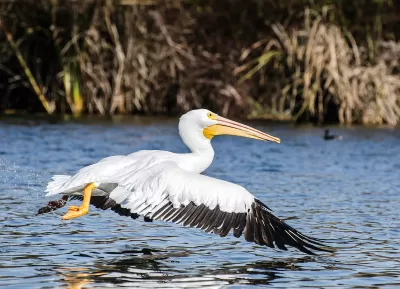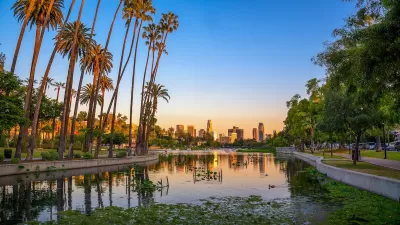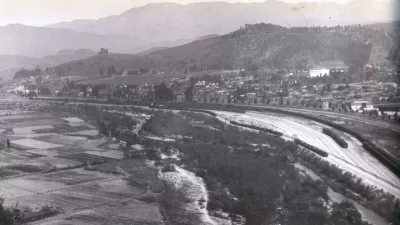Developed through the input of thousands of community members, this is the first comprehensive plan by the City of Los Angeles for the 2,000-acre basin.

Los Angeles city, county, and state leaders have unveiled an ambitious vision plan featuring 47 capital projects aimed at transforming the Sepulveda Basin, a 2,000-acre green space in the San Fernando Valley. This plan includes significant restoration efforts for the Los Angeles River, focusing on enhancing public access and recreational opportunities. Key elements of the plan involve creating a cohesive bike path, improving kayaking access, and restoring natural ecosystem functions to reduce flood risks and enhance community cooling.
California Senator Henry Stern kickstarted the initiative by presenting a $2.5 million check, emphasizing the need to replace concrete and asphalt with green spaces to cool the Valley and improve public health. The restoration of the three-mile stretch of the LA River through the basin is a central focus, aiming to create a more connected and accessible recreational area. Projects include enhancing the river's floodplains to promote groundwater replenishment and habitat diversity, thus addressing public safety and environmental concerns simultaneously.
Additional projects aim to upgrade outdated facilities within the Sepulveda Basin, such as playgrounds, sports fields, and other recreational amenities. L.A. City Councilwoman Imelda Padilla highlighted the comprehensive nature of these improvements, which span from baseball and soccer fields to model airplane zones and archery ranges. These enhancements are contingent on securing further funding, but they promise to significantly enrich the recreational and ecological value of the Sepulveda Basin for the community.
FULL STORY: LA lays out vision for Sepulveda Basin; includes LA River restoration

Study: Maui’s Plan to Convert Vacation Rentals to Long-Term Housing Could Cause Nearly $1 Billion Economic Loss
The plan would reduce visitor accommodation by 25,% resulting in 1,900 jobs lost.

North Texas Transit Leaders Tout Benefits of TOD for Growing Region
At a summit focused on transit-oriented development, policymakers discussed how North Texas’ expanded light rail system can serve as a tool for economic growth.

Why Should We Subsidize Public Transportation?
Many public transit agencies face financial stress due to rising costs, declining fare revenue, and declining subsidies. Transit advocates must provide a strong business case for increasing public transit funding.

How Community Science Connects People, Parks, and Biodiversity
Community science engages people of all backgrounds in documenting local biodiversity, strengthening connections to nature, and contributing to global efforts like the City Nature Challenge to build a more inclusive and resilient future.

Alabama: Trump Terminates Settlements for Black Communities Harmed By Raw Sewage
Trump deemed the landmark civil rights agreement “illegal DEI and environmental justice policy.”

Dear Tesla Driver: “It’s not You, It’s Him.”
Amidst a booming bumper sticker industry, one writer offers solace to those asking, “Does this car make me look fascist?”
Urban Design for Planners 1: Software Tools
This six-course series explores essential urban design concepts using open source software and equips planners with the tools they need to participate fully in the urban design process.
Planning for Universal Design
Learn the tools for implementing Universal Design in planning regulations.
City of Santa Clarita
Ascent Environmental
Institute for Housing and Urban Development Studies (IHS)
City of Grandview
Harvard GSD Executive Education
Toledo-Lucas County Plan Commissions
Salt Lake City
NYU Wagner Graduate School of Public Service





























